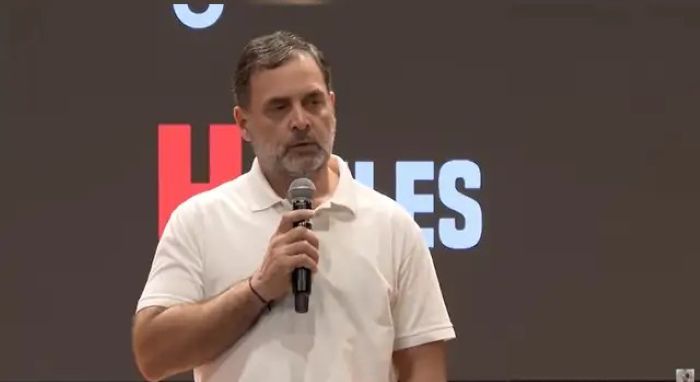(In classrooms, libraries, and even late-night study sessions, a quiet revolution hums beneath the glow of screens. A silent partner helps students write, reason, and imagine—but also tempts them to take the easy way out. The essay explores how generative AI, while transforming learning and creativity, challenges our relationship with effort, curiosity, and authenticity. It urges readers to see AI not as a replacement for human thought, but as a reflective companion that deepens it.)
“My chatbot did my homework!” That’s the new classroom whisper. From writing essays to solving maths problems and generating artwork, Generative AI has become the go-to sidekick for students across the globe. It’s fast, smart, and—let’s be honest—kind of fun. But as this technology becomes more accessible, a quiet question echoes in homes and schools: Is AI helping us grow, or is it quietly making us lazy?
AI Is Not Here to Replace Us
Despite the sci-fi imagery and robotic metaphors, AI isn’t a sentient overlord plotting to outwit humanity. It doesn’t dream, feel, or aspire. It’s a tool—an incredibly powerful one—that reflects the questions we ask and the data we feed it.
Yet, many still fear that AI might “dwarf” human beings, making us less curious, less creative, and less capable. That fear, while understandable, misses the bigger picture. AI doesn’t replace human relationships, moral reasoning, or lived experience. What it can do is amplify our thinking, accelerate our learning, and unlock new dimensions of creativity—if we use it wisely.
Used carelessly, AI can become a shortcut that undermines growth. Students may rely on it to summarise books, solve assignments, or generate visuals—bypassing the very processes that build comprehension, creativity, and critical thinking.
Take reading, for instance. Why wrestle with a dense novel when AI can summarise it in seconds? Because reading builds emotional depth, vocabulary, and imagination. AI can’t replicate the experience of getting lost in a story or grappling with a complex idea.
As one teacher quipped, “If Shakespeare had used AI, Hamlet might’ve said, ‘To be or not to be… Let me check with my chatbot.’”
Overuse of AI can also stunt vocabulary development. Simplified, generic language becomes the norm, weakening students’ ability to express themselves in interviews, debates, or real-world conversations.
Ready-made answers discourage curiosity. Students stop asking “why” and “how”—the very questions that fuel discovery. Visual creativity isn’t immune either. AI-generated images may be stunning, but they can tempt students to skip the messy, magical process of sketching, designing, and imagining from scratch.
And socially, AI can become a substitute for peer interaction. Instead of discussing problems with friends, parents, or teachers, students might turn to AI—missing out on empathy, collaboration, and emotional nuance.
When AI Becomes a Catalyst
But here’s the flip side: when used wisely, AI can be a game-changer. It can unlock new dimensions of learning, creativity, and exploration.
Stuck on a project? AI can offer prompts, analogies, or visual inspiration. It’s like having a brainstorming buddy who never sleeps and never says, “I’m out of ideas.”
Facing a tight deadline? AI can summarise sources, suggest outlines, or compile data—helping students organise their thoughts before diving deeper.
Generative AI also opens doors to global perspectives. It can compare curricula, teaching methods, or cultural viewpoints from around the world—broadening understanding and encouraging cross-cultural empathy.
It adapts to different learning styles, simulates quizzes, and even offers interactive lessons tailored to individual needs. Curious students can dive into niche topics—quantum physics, ancient philosophy, or emerging tech—without waiting for a formal course. It’s a gateway to lifelong learning.
Dialogue Over Download
Here’s the golden rule: AI should be a collaborator, not a solver. It’s not a vending machine for answers—it’s a dialogue partner. The more we question, challenge, and build on its outputs, the more we grow.
One student put it perfectly: “AI doesn’t do my thinking—it makes me think harder.”
This mindset—of engaging rather than consuming—is what transforms AI from a crutch into a catalyst. It’s the difference between downloading knowledge and dialoguing with it.
Not Just a Tool
Consider a schoolchild in a remote Himalayan village. With no chess club or coach, they use AI to learn the game. They ask, “How do I play chess?” and receive diagrams, strategies, and simulated games. As they improve, they begin to ask deeper questions: “Why did I lose this match?” “What if I try a different move?” AI becomes a sparring partner, a coach, and a mirror to their growing mind.
Or take a law student in a semi-urban college preparing for a moot court. With limited library access, they use AI to explore landmark privacy cases, simulate counterarguments, and rehearse their presentation. AI becomes a rehearsal room, a debate partner, and a sounding board.
In both cases, the student is not outsourcing their thinking—they’re enhancing it.
A recent Pew Research Center survey found that about 13% of U.S. teens aged 13–17 have used ChatGPT for schoolwork, with usage rising to 25% among older students. While many teens are turning to AI tools, only a small fraction report feeling confident in evaluating the accuracy of AI-generated content. This gap is where educators and parents must step in—not to ban AI, but to teach how to use it.
As one parent shared, “My daughter used AI to write a poem. Then she rewrote it to make it hers. That’s when I saw her grow.”
A Call to Action
For educators: Integrate AI into assignments but require human reflection. Ask students, “What did you learn from AI, and what did you disagree with?”
For parents: Co-learn with your children. Explore AI together and discuss its limitations. Encourage curiosity, not shortcuts.
For students: Use AI to ask better questions, not just get answers. Keep a curiosity journal. Challenge the machine.
Try tools like ChatGPT for writing, DALL·E for visual brainstorming, or Khanmigo for personalised tutoring. But always follow up with your own voice, your own judgment, and your own questions.
From Robot to Ally
It may sound funny, but many still see AI as a mechanical robot. In truth, it’s more like a thoughtful notebook that talks back—a collaborator that nudges you to think harder, ask better questions, and imagine more boldly.
As one student joked, “AI is like my nerdy cousin—super smart, a little awkward, but always ready to help.”
Let’s teach our children not just to use AI, but to dialogue with it. That’s how we turn technology into transformation.
The Human Edge
AI can simulate knowledge, but it can’t simulate wisdom. It can generate ideas, but it can’t generate insight. It can mimic empathy, but it can’t feel it.
The future belongs not to those who fear AI, nor to those who worship it—but to those who collaborate with it. Let’s raise a generation that sees AI not as a crutch, but as a catalyst. Not as a robot, but as a partner. Not as a threat, but as a mirror to their own brilliance.
Author’s Note
Learning, at its heart, is a conversation—sometimes with books, sometimes with people, and now, with intelligent machines. AI’s arrival doesn’t end that dialogue; it deepens it. The challenge before us is not whether machines can think, but whether we will continue to.
— Krishan Gopal Sharma= (Views are personal)
<><><>
.jpg)
 Krishan Gopal Sharma
Krishan Gopal Sharma 
















